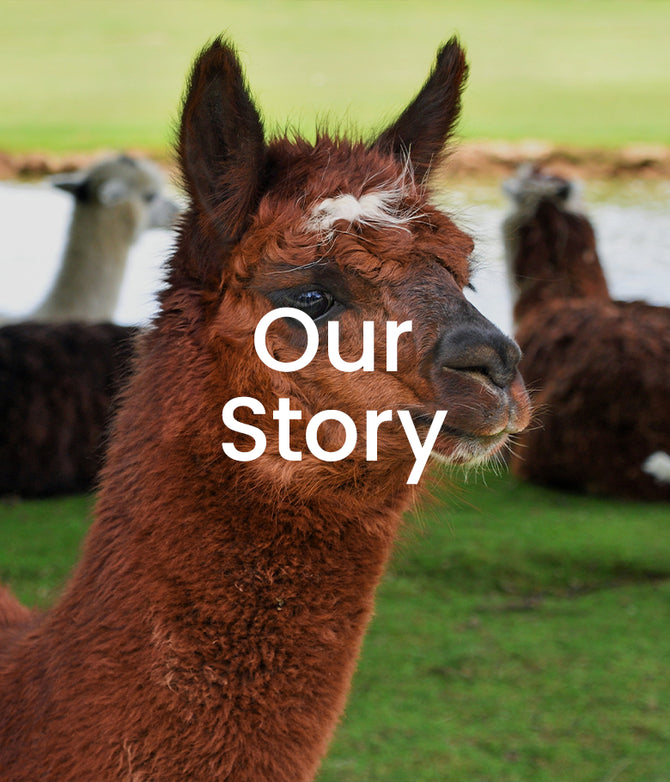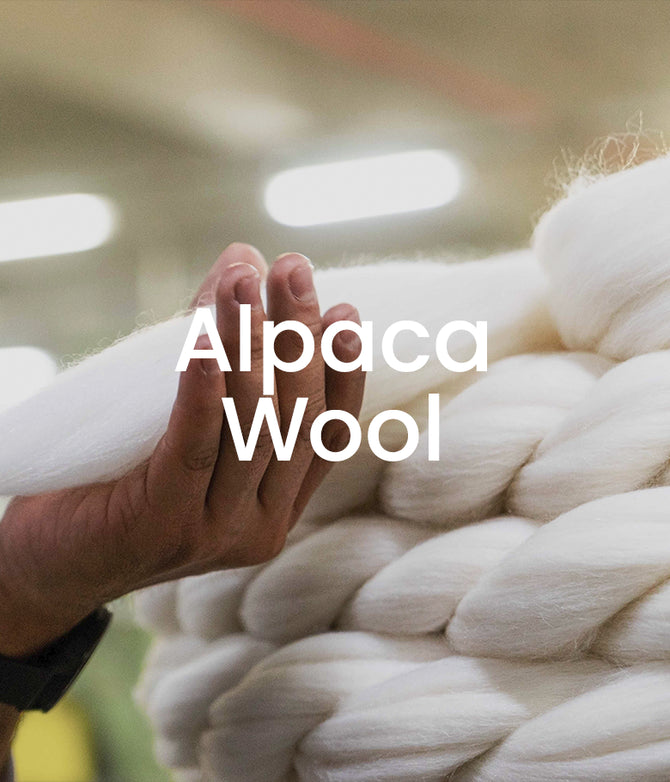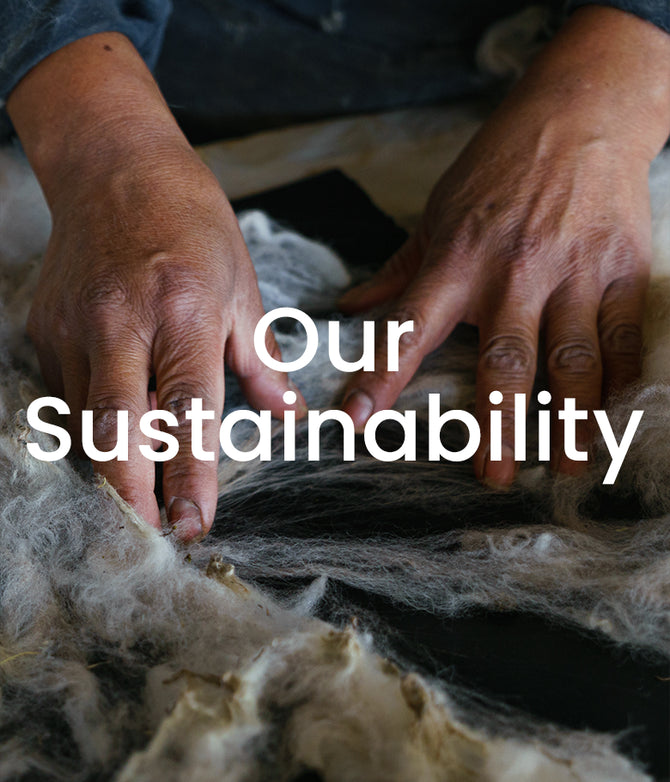The History of Alpaca Herding in the Sacred Valley:
From Inca Traditions to Living Heritage
Published May 15, 2025
1. Say Goodbye to Single-Use Plastics
Single-use plastics are a huge environmental problem, but small tweaks in your daily habits can make a big difference:
- Bring reusable bags: Make or buy groceries and produce bags to use instead of plastic ones. Keep them by the door or in your car so you never forget them.
- Ditch bottled water: Invest in a reusable water bottle [1]. If tap water isn’t safe, boil or filter it instead.
- Carry a reusable coffee cup: Even “eco-friendly” disposable cups create waste if not disposed of properly.
- Pack a zero-waste kit: Include bamboo or metal cutlery, a reusable straw, and a container for takeout. It might take practice, but soon it’ll feel natural.
2. Use Less Water and Energy
Every drop counts, and every watt matters. Here are a few small changes to reduce your footprint:
- Shorten your showers: A quick shower saves both water and energy. Bonus: it’s better for your skin too! [2]
- Turn off the lights: Unplug appliances and switch off lights when you’re not using them [3].
- Hang clothes to dry: Whenever possible, skip the dryer and hang your clothes. It’s gentler on fabrics and the planet.
- Flush smarter: If your toilet has an eco-flush option, use it. No eco-flush? Place a filled bottle in the tank to reduce water per flush.
At Arms of Andes we make our gear from 100% Royal Alpaca Wool of 18-18.5 microns.
3. Make Eco-Conscious Food Choices
Food is one of the easiest ways to live more sustainably:
- Buy local and seasonal: This reduces transportation emissions and supports local farmers [4].
- Cook from scratch: Homemade meals usually come with less packaging and waste.
- Be mindful about meat: Choose ethically raised options, like free-range chicken or grass-fed beef, and support sustainable farming practices. Exploring plant-based meals occasionally can also make a difference [5].
- Opt for sustainable groceries: Shop at packaging-free or bulk stores. No access? Buy in bulk at your regular store to minimize waste.
4. Rethink Your Transportation Habits
How you get around affects your carbon footprint. Start small:
- Walk or bike more: Even once a week can make a difference.
- Use public transport: Replace car trips with bus or train rides when possible [9].
- Carpool: Sharing rides with colleagues or friends reduces emissions.
- Fly less: For shorter trips, consider buses or trains. Offset your carbon emissions for long flights.
5. Choose Sustainable Fashion
The fashion industry is one of the largest polluters, but your wardrobe can make a difference:
- Avoid fast fashion: Look for quality over quantity. Cheaper often means corners were cut in ethics and sustainability.
- Buy second hand: Thrift stores and online resale platforms are great for finding unique, affordable items.
- Support eco-conscious brands: Do your research and choose brands that prioritize sustainability, like Arms of Andes, which uses 100% alpaca wool and natural dyes [6].
- Host clothing swaps: A fun way to give new life to unused items in your closet [7].

6. Upgrade Your Hygiene and Cleaning Habits
Small changes to your personal care and cleaning routines can have a big impact:
- Switch to bamboo* toothbrushes: Look for ones with compostable bristles and packaging.
- Choose steel razors: A durable, waste-free alternative to disposable razors.
- Use natural options: Biodegradable shampoos, soaps, and detergents are better for the planet.
- Use menstrual cups and fabric sanitary towels: They take a little getting used to, but you won’t go back when you do!
- Clean with vinegar and baking soda: These simple ingredients work wonders around the house and are free of harmful chemicals [8].
* When choosing products made from bamboo, try to ensure the bamboo comes from sustainable sources.
7. Embrace Nature and DIY Solutions
Spending time outdoors and trying DIY solutions are both fun and sustainable:
- Grow your own vegetables: Even a small herb garden on a windowsill can make a difference.
- Start composting: Turn food scraps into nutrient-rich compost for your garden. No garden? Check if your city collects food waste.
- Connect with nature: Spending time outside reduces stress and reminds us why protecting the planet matters.
- Join community initiatives: Participate in clean-ups or tree-planting events.
8. Be Mindful About Waste
Rethinking how you handle waste is key to sustainable living:
- Reuse before you recycle: Find new uses for things before throwing them away.
- Donate or swap: Let someone else enjoy what you no longer need.
- Avoid expedited shipping: One-day deliveries often mean more vehicles on the road, increasing emissions.
Sustainable living starts with REDUCING waste, REPAIRING and/or REUSING broken/unused items, before RECYCLING or, when possible, COMPOSTING them.
Why Small Steps Matter
You might think, “Will my tiny changes really help?” The answer is yes. If everyone made just one or two of these adjustments, the collective impact would be enormous. And remember, you don’t have to do everything at once. Pick a couple of these tips to start with, and add more as you go. Before you know it, living sustainably will feel like second nature.
So, are you ready to make 2024 your most sustainable year yet? Small steps today can lead to a greener tomorrow. Let’s get started—one habit at a time!

At Arms of Andes we make our gear from 100% Royal Alpaca Wool of 18-18.5 microns.
Reading time: 5 minutes
By Lesia Tello & Jordy Munarriz
This is more than a story about animals. It’s about roots, rituals, and relationships—brought into focus every year on Alpaca Day, celebrated every August 1st, when the bond between alpacas and Andean culture takes center stage.
More Than a Wool Provider
High in the Andes, nestled between snow-capped peaks and terraced hillsides, alpacas have quietly shaped the rhythm of Andean life for millennia. In Peru's Sacred Valley, these gentle camelids are more than a source of fiber—they are symbols of endurance, knowledge, and reciprocity.
To understand alpaca wool is to trace the threads of history itself: from ancient pastoralists to the present-day herders who still walk the same paths their ancestors carved into the mountains.The Sacred Valley is not only a place of breathtaking beauty, but also a living archive of one of the world’s oldest pastoral traditions.
Origins in the Andes: Domestication Before Empire
Long before there were empires, the people of the high Andes were forging a quiet revolution—one that would transform the landscape and their way of life. Alpacas were first domesticated over 6,000 years ago in the high, wet puna of the central Andes [1,2]. Archaeozoological data suggests that the alpaca descends from the wild vicuña, while its cousin, the llama, was domesticated from the guanaco [3]. Both species were central to the development of early Andean societies, though their roles diverged: llamas for transport, alpacas for their fine fleece.
These early communities didn’t simply tame animals—they built relationships. They observed, adapted, and over time, bred creatures that could thrive in the thin, oxygen-poor air of the altiplano. Genetic studies show alpacas developed traits like hypoxia resistance and dense fleece to survive in these extreme conditions [1].
The Sacred Valley, with its wet grasslands and elevated terrain, provided an ideal environment for alpaca domestication. Its altitude and ecology still mirror the high puna landscapes that first shaped alpaca biology and behavior [2].

Picture by: M. Seow


6. Upgrade Your Hygiene and Cleaning Habits
Small changes to your personal care and cleaning routines can have a big impact:
- Switch to bamboo* toothbrushes: Look for ones with compostable bristles and packaging.
- Choose steel razors: A durable, waste-free alternative to disposable razors.
- Use natural options: Biodegradable shampoos, soaps, and detergents are better for the planet.
- Use menstrual cups and fabric sanitary towels: They take a little getting used to, but you won’t go back when you do!
- Clean with vinegar and baking soda: These simple ingredients work wonders around the house and are free of harmful chemicals [8].
* When choosing products made from bamboo, try to ensure the bamboo comes from sustainable sources.
7. Embrace Nature and DIY Solutions
Spending time outdoors and trying DIY solutions are both fun and sustainable:
- Grow your own vegetables: Even a small herb garden on a windowsill can make a difference.
- Start composting: Turn food scraps into nutrient-rich compost for your garden. No garden? Check if your city collects food waste.
- Connect with nature: Spending time outside reduces stress and reminds us why protecting the planet matters.
- Join community initiatives: Participate in clean-ups or tree-planting events.
At Arms of Andes we make our gear from 100% Royal Alpaca Wool of 18-18.5 microns.
Inca Era: Sacred Animals and Sophisticated Herding Systems
By the time the Inca Empire rose to power, the bond between humans and alpacas had become something sacred. Alpacas were more than livestock—they were woven into the cosmology of the state. Their fleece, especially the white variety, was considered sacred and reserved for rituals, sacrifices, and the garments of Inca royalty.
The Incas managed enormous state herds using a sophisticated system of herders known as llamichos. These herders were highly respected and played a crucial role in the empire’s economy and ritual life. They practiced seasonal migration, pasture rotation, and had deep knowledge of grazing dynamics, animal behavior, and landscape stewardship [3].
In the Sacred Valley, alpaca herding was both a livelihood and a calling. The knowledge of when to move the herds, how to treat common ailments with native herbs, and how to balance the needs of animals with the resilience of the land was passed from one generation to the next. Every aspect of herding—feeding, shearing, birthing—had ceremonial weight.
Alpacas also appeared in textiles, pottery, and ceremonial objects, often depicted as messengers between the earthly and spiritual realms. In every sense, they were part of a living Andean cosmovision [3].

Picture by: Sarai Carrasco
Colonial Disruption and Cultural Persistence
Everything changed with the Spanish conquest. Colonial regimes dismantled Incan systems, replacing alpaca herds with European sheep and marginalizing Andean pastoral knowledge [1]. Spanish colonizers failed to distinguish between llamas and alpacas, leading to uncontrolled hybridization and degradation of fiber quality.
This period saw not only genetic mixing but also spiritual loss. Alpacas lost their ceremonial status and became utilitarian commodities. Despite this, communities in the Sacred Valley and beyond resisted erasure. They continued to herd alpacas, preserving language, rituals, and techniques across centuries of marginalization.
Pre-Hispanic breeds vanished, diseases spread, and landscapes changed—but the practice endured [3,4]. Today, what survives is a remarkable act of cultural resistance: Andean families continuing to raise alpacas not just as animals, but as symbols of identity.

Picture by: Maritza S.
At Arms of Andes we make our gear from 100% Royal Alpaca Wool of 18-18.5 microns.
160 UltralightWomen's Alpaca Wool
Hiking T-Shirt
160 Ultralight
Relaxed FitWomen's Alpaca Wool Leggings 300
Lightweight

For snowboarders, skiers, and winter hikers, weight matters. Every gram counts when you're climbing, carrying gear, or navigating the slopes. Alpaca wool’s unique insulation properties allow for lightweight warmth, meaning you stay protected without unnecessary bulk.
Five Reasons to Choose Alpaca Wool for Snow Sports
Alpaca wool is the ultimate base and mid layer material for tackling the demands of skiing and snowboarding. Its unique properties make it an exceptional choice for base and mid layers, ensuring comfort and performance on the slopes.
1. Exceptional Warmth
Alpaca wool fibers feature semi-hollow cores, providing incredible insulation. Combined with their natural crimp (waviness), these fibers trap heat efficiently,
2. Breathable and Moisture-Wicking
One of alpaca wool’s standout qualities is its ability to wick moisture away from your skin while remaining highly breathable. This means you stay dry and comfortable, even during intense physical activity. Alpaca wool base layers, such as leggings and shirts, excel in keeping you warm and sweat-free.
3. Temperature Regulation
Alpaca wool’s unique ability to balance warmth and breathability helps regulate your body temperature. Whether you're racing downhill or waiting for the ski lift, alpaca wool keeps you warm in the cold and prevents overheating during activity.
4. Lightweight and Flexible
Thanks to its excellent insulating properties, alpaca wool keeps you warm without adding bulk. This lightweight quality ensures freedom of movement—crucial for maintaining balance and agility on the slopes.
At Arms of Andes we make our gear from 100% Royal Alpaca Wool of 18-18.5 microns.
Men's Alpaca Wool Jacket
420 Midweight Full-Zip

Relatedcontent
Bamboo:
A fast-growing plant often used for making sustainable products like toothbrushes and cutlery.
Biodegradable:
Materials that can break down naturally without harming the environment.
Bulk stores:
Shops where you can buy products in large quantities, often with minimal packaging.
Carbon footprint:
The total amount of greenhouse gases produced directly or indirectly by human activities.
Composting:
A process where organic waste decomposes into nutrient-rich material for gardening.
Ethically raised:
Livestock or poultry that is raised in humane and environmentally responsible ways.
Fast fashion:
Cheap, mass-produced clothing often linked to environmental and ethical issues.
Natural dyes:
Coloring substances derived from plants, animals, or minerals, used to color fabrics sustainably.
Alpaca Herding Today: A Living Tradition in the Sacred Valley
In today’s Sacred Valley, you can still feel that lineage. In the crisp morning air of Patacancha, or the quiet slopes of Misminay, the rhythm of hooves on stone paths echoes ancient footsteps. Here, women spin wool beside adobe homes, children laugh as they tend flocks, and elders speak of the seasons like they are kin.
More than 82,000 families across Peru continue to depend on alpacas for fiber, meat, and cultural identity [6]. But they face new challenges: climate change has made snowfall less predictable, extreme poverty persists, and global market trends threaten traditional breeds and practices [4].
In communities like Ccarhuancho, herders adapt by preserving highland wetlands known as bofedales. These wetlands, crucial for dry-season grazing, are managed through communal irrigation, rotational grazing, and decision-making guided by ayni and minga—reciprocity and collective labor [5]. These methods sustain fragile ecosystems while allowing herding to adapt to climate change.
Yet sustainability isn’t only about ecology. The international preference for white alpaca fleece has pressured herders to breed for a single trait, reducing genetic diversity and threatening rare varieties like the Suri [4]. And as elders age, fewer young people remain in the highlands to inherit their wisdom.
But there is hope. Organizations like Threads of Peru and Awamaki partner with local women to revitalize traditional weaving, offering fair wages and recognition. At the same time, programs to integrate ancestral knowledge into sustainable breeding are gaining ground.
As Benning (2018) observed in Ollantaytambo, some locals still trade goods through ayni—potatoes for wool, help for help. These aren’t just quaint customs. They are reminders that the Sacred Valley has its own way of measuring value—through relationship, reciprocity, and resilience. [7]

Picture by: Anyela Malaga
Why It Matters: A Global Connection Through Wool
When you wrap yourself in alpaca wool, you’re not just feeling warmth. You’re feeling history. You’re wrapped in the legacy of highland herders, in the breath of vicuñas from the puna grasslands, in the gentle knowledge of people who have always known how to live with the land.
You’re also choosing something radical: to resist fast fashion. To slow down. To ask where your clothing comes from, who made it, and what it costs to the Earth and its people.
True sustainability is more than a buzzword. It’s the preservation of language, land, and labor. It’s intergenerational memory stitched into every thread.
In a time when globalization threatens to flatten culture, the Sacred Valley rises like a woven tapestry—full of color, texture, and memory. And the herders who guide their flocks across this ancient landscape? They are not echoes of the past. They are guardians of the future.
Wear alpaca with intention. Because in every fiber, there is a story waiting to be honored.


Glossarykeywords
Alpaca:
Domesticated South American camelid prized for its soft fleece, traditionally herded in the Andes for thousands of years.
Ayni:
An Andean principle of sacred reciprocity—giving and receiving to maintain balance between people, communities, and nature.
Bofedales:
High-altitude wetlands in the Andes used for grazing alpacas, managed through communal irrigation and rotational grazing.
Camelid:
Member of the camel family, including llamas, alpacas, vicuñas, and guanacos, essential to Andean economies and cultures.
Cosmovision:
Indigenous Andean worldview that integrates nature, spirituality, and community as interconnected.
Fiber:
The soft, warm fleece of the alpaca, valued globally for its durability, insulation, and sustainability.
Guanaco:
Wild South American camelid; ancestor of the domesticated llama.
Hybridization:
Genetic mixing between species, notably between llamas and alpacas after the Spanish conquest, which affected fleece quality.
Inca Empire:
Pre-Columbian Andean civilization that elevated alpacas to sacred status and practiced organized state herding.
Llamicho:
Specialized Inca herder responsible for managing large flocks of llamas and alpacas.
Minga:
Communal work tradition in Andean societies, often used for managing land, water, and herds.
Puna:
High-altitude ecosystem in the Andes where alpacas were first domesticated.
Sacred Valley:
A fertile region in southern Peru that was central to Inca civilization and remains vital to traditional alpaca herding today.
Suri:
A rare breed of alpaca known for its long, silky fleece, increasingly at risk due to commercial breeding pressures.
Vicuna:
Wild camelid native to the Andes, and genetic ancestor of the domesticated alpaca, known for its extremely fine wool.
At Arms of Andes we use the finest Royal Alpaca Wool sourced in the Peruvian Andes. The Andean alpacas naturally developed over thousands of years in harsh conditions in high altitudes, creating the perfect fiber for outdoor gear that helps you stay protected in all conditions. Discover our outdoor apparel.

In the textile industry, companies that produce garments made entirely from Merino wool typically use fibers that are 17.5 microns or finer to minimize any itchiness or roughness, [4] ensuring comfort for their customers. A study conducted by the Division of Dermatology at the University of Louisville in 2019 evaluated the effects of wearing these garments on individuals with skin sensitivities, such as atopic dermatitis or eczema. In the study, 25 participants wore only Merino wool garments of 17.5 microns for six weeks and cotton garments of 21 microns for six weeks more, while another group of 25 followed the reverse order. Participants reported significant changes when switching from cotton to Merino wool, with those who started in Merino wool experiencing a decrease in their eczema during the first weeks. [4]
| Properties | Royal Alpaca Wool | Cashmere | Merino Wool |
|---|---|---|---|
| Weight | Lightest | Light | Heavier |
| Fiber Structure | Semi-Hollow | Solid | Solid |
| Thermal Capacity | 5 x Warmer | 3 x Warmer | Warm |
| Water Retention | Absorbs 10% of weight | Shrinks in water | Absorbs 10%
of weight |
| UV Protection | Yes | Yes | Yes |
| Fiber Scales | Smoothest | Softest | Prickly |
| Microns (average) | 17.5 | 14 | 18 |
| Tensile Strength | Highest | Weak | High |
| Odor Resistance | Yes | Yes | Yes |
| Wrinkle Resistance | Yes | Yes | Yes |
| Hypoallergenic (Lanolin free) | Yes | Yes | No |
The Final Verdict: And the Winner Is...
After a comprehensive analysis of alpaca, merino, and cashmere, it's clear that cashmere, while undeniably luxurious, lacks the durability required for outdoor garments. However, it excels as a high-end fiber for special occasions and elegant attire.
In the head-to-head battle between alpaca and merino, alpaca emerges as the undisputed champion! Alpaca wool surpasses merino in warmth, lightness, softness, and strength. It's the ultimate choice for those seeking performance, comfort, and sustainability.
Authors & Researchers

Lesia tello
Biologist and hiking enthusiast with a deep admiration for nature and the intricate mechanisms of life. With a background in biochemistry and a master’s degree in education, she blends science with adventure, exploring how we interact with the natural world and sharing insights on outdoor experiences.

Jordy Munarriz
Environmental Engineer with a master’s degree in renewable energy and a specialization in sustainability. A passionate traveler and advocate for responsible tourism, he captures the essence of exploration through storytelling, inspiring others to connect with nature in a conscious and meaningful way.
Authors & Researchers

Lesia tello
Biologist and hiking enthusiast with a deep admiration for nature and the intricate mechanisms of life. With a background in biochemistry and a master’s degree in education, she blends science with adventure, exploring how we interact with the natural world and sharing insights on outdoor experiences.

Jordy Munarriz
Environmental Engineer with a master’s degree in renewable energy and a specialization in sustainability. A passionate traveler and advocate for responsible tourism, he captures the essence of exploration through storytelling, inspiring others to connect with nature in a conscious and meaningful way.
Alpaca wool (particularly the royal and baby alpaca fiber grades) is non-itchy, warm, and performs better than merino and other types of sheep's wool. This makes alpaca wool perfect for your outdoor clothing, slipper socks, and even underwear.

Glossarykeywords
Ayni:
An Andean principle of sacred reciprocity—giving and receiving to maintain balance between people, communities, and nature.
Bofedales:
High-altitude wetlands in the Andes used for grazing alpacas, managed through communal irrigation and rotational grazing.
Cosmovision:
Indigenous Andean worldview that integrates nature, spirituality, and community as interconnected.
Hybridization:
Genetic mixing between species, notably between llamas and alpacas after the Spanish conquest, which affected fleece quality.
Inca Empire:
Pre-Columbian Andean civilization that elevated alpacas to sacred status and practiced organized state herding.
Sacred Valley:
A fertile region in southern Peru that was central to Inca civilization and remains vital to traditional alpaca herding today.
Suri:
A rare breed of alpaca known for its long, silky fleece, increasingly at risk due to commercial breeding pressures.
References:
[1] Fan, R., Gu, Z., Guang, X., Marín, J. C., Varas, V., González, B. A., ... & Dong, C. (2020). Genomic analysis of the domestication and post-Spanish conquest evolution of the llama and alpaca. Genome Biology, 21, 1-26. https://doi.org/10.1186/s13059-020-02080-6
[2] Yacobaccio, H. D. (2021). The domestication of South American camelids: a review. Animal Frontiers, 11(3), 43-51. https://doi.org/10.1093/af/vfaa065
[3] Goñalons, G. L. M. (2008). Camelids in ancient Andean societies: A review of the zooarchaeological evidence. Quaternary International, 185(1), 59-68. https://doi.org/10.1016/j.quaint.2007.05.022
[4] Bello-Bravo, J., Pilares, D., Brito, L. F., Toro Ospina, A. M., Sousa Junior, L. P., Mamani Mamani, G. C., ... & Richardson, J. (2024). Social sustainability and genetic biodiversity in Peruvian alpaca production: a review. Pastoralism: Research, Policy and Practice, 14, 13668. https://doi.org/10.3389/past.2024.13668
[5] Verzijl, A., & Quispe, S. G. (2013). The system nobody sees: irrigated wetland management and alpaca herding in the Peruvian Andes. Mountain Research and Development, 33(3), 280-293. https://doi.org/10.1659/MRD-JOURNAL-D-12-00123.1
[6] Wurzinger, M., & Gutiérrez, G. (2022). Alpaca breeding in Peru: From individual initiatives towards a national breeding programme?. Small Ruminant Research, 217, 106844. https://doi.org/10.1016/j.smallrumres.2022.106844
[7] Benning, J. (2018, noviembre 19). Into Peru's Sacred Valley. Recuperado de https://www.jimbenning.net/stories/2018/11/19/into-perus-sacred-valley






















